The Charge of the Light Brigade

Brief Synopsis
Cast & Crew
Michael Curtiz
Errol Flynn
Olivia De Havilland
Patric Knowles
Henry Stephenson
Nigel Bruce
Film Details
Technical Specs

Synopsis
Major Geoffrey Vickers of the 27th Bengal Lancers, and Sir Humphrey Harcourt, an English diplomat, visit the Amir Surat Khan of Suristan to tell him that funds previously guaranteed from the British government have been discontinued. Geoffrey recognizes the Khan's displeasure, but wins his personal loyalty when he saves the Khan's life during a leopard hunt. Geoffrey reports to Calcutta, where his fiancée, Elsa Campbell, is staying with her father, the colonel. While Geoffrey has been away, Elsa has fallen in love with his younger brother, Perry. Geoffrey refuses to believe Perry's revelation, and the brothers quarrel bitterly. Before they can settle their differences, Geoffrey is sent to Tartar, where he bravely outwits border tribesmen, and then to Chukoti where Colonel Campbell and Elsa are stationed. Perry, meanwhile, has been sent a few miles away to Lohara. There, Benjamin Warrenton is in command and is unaware that Surat Khan has been gathering forces at the border. When he orders Campbell's troops to march to Lohara on maneuvers, he leaves Chukoti vulnerable. The Khan raids the fort, slaughtering the inhabitants, including Colonel Campbell. Elsa and Geoffrey escape, and she finally convinces him that she truly loves Perry. Geoffrey gallantly accepts his personal defeat and protects Perry by sending him away from the ensuing battle. Meanwhile, the Kahn has joined with the Russians, and Sir Charles Macefield, commander of the British forces in the Crimea, sends orders with Geoffrey to Warrenton not to attack the Kahn. Geoffrey, spurred by his anger over the Chukoti massacre, rewrites the orders and leads a death charge against the Khan's stronghold near Balaklava. In the battle, the Kahn shoots and mortally wounds Geoffrey, but even as he is dying, he impales the evil prince. The sacrifice of Geoffrey and the six hundered Lancers, however, is not in vain. Macefield sends troops to support the fighting and Sebastopol is taken. Macefield then burns Geoffery's letter in which he admits his guilt, and takes full responsibilty for the charge.

Director

Michael Curtiz
Cast

Errol Flynn

Olivia De Havilland
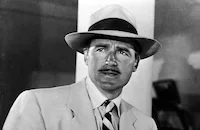
Patric Knowles
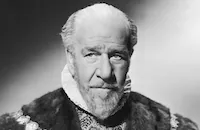
Henry Stephenson
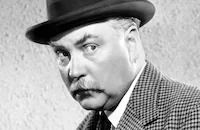
Nigel Bruce
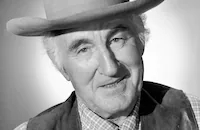
Donald Crisp

David Niven

C. Henry Gordon
G. P. Huntley Jr.

Robert Barrat

Spring Byington

E. E. Clive

J. Carrol Naish
Walter Holbrook
Charles Sedgwick

Scotty Beckett
George Regas
Helen Sanborn
Lumsden Hare
Princess Baigum
Colin Kenny
Gordon Hart
George David
Carlos San Martin
Dick Botiller
Jimmy Aubrey
R. Singh
David Thursby
Denis D'auburn
Herbert Evans
Phillis Coghlan
Jon Kristen
Frank Lackteen
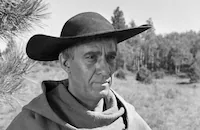
Martin Garralaga
Stefan Moritz
Arthur Thalasso
Lal Chand Mehra
Jack Curtis
Harry Semels
Michael Visaroff
Carlyle Moore Jr.
Reginald Sheffield
Georges Renavent
Charles Croker-king

Wilfred Lucas

Brandon Hurst
Frank Baker
Ben F. Hendricks
Crauford Kent
Olaf Hytten
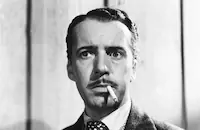
Boyd Irwin

Holmes Herbert
George Sorel
Crew
George Amy
Milo Anderson
Samuel Bischoff
Mary Deary
B. Reeves Eason
Frank Evans
Frank Flanagan
Leo F. Forbstein
Frank Fox
Al Green
Harold Hanks
Major Sam Harris Ret. A. L. H.
Frank Heath
John Hughes
Fred Jackman
Michel Jacoby
Michel Jacoby
Mac Julian
Rowland Leigh
Stanley Logan
Frank Mattison
John More
Harold Noyes
Herbert Plews
John Polito
Sol Polito
Irving Rapper
Captain E. Rochfort-john
Ray Romero
Max Steiner
Jack Sullivan
Allan Taylor
Fred Tyler
Lloyd Ward
Jack L. Warner
Frank Weixel
Henry West
Western Costume Company
Dick Williams

Photo Collections
Videos
Movie Clip





Trailer
Promo
Film Details
Technical Specs

Award Wins
Best Assistant Director
Award Nominations
Best Score
Best Sound
Articles
The Charge of the Light Brigade (1936)
History students should put away their notepads while watching this one. Michel Jacoby's narrative has virtually nothing to do with the very real Crimean War story it's theoretically based upon, outside of the presence of a lot of galloping horses and falling soldiers. In fact, the British Lords who were responsible for one of the deadliest blunders in all of military history never get so much as a finger pointed at them during the movie. That would ruin the phony heroism.
Flynn and Patric Knowles play Geoffrey and Perry Vickers, sibling British soldiers who have to contend with a murderous (and purely fictional) Indian Chieftain named Surat Khan (C. Henry Gordon.) When Geoffrey is sent to Arabia to secure thousands of horses for the British, he meets up with his long-time fiancée, Elsa Campbell (Olivia de Havilland.) Unfortunately, Elsa has hooked up with Perry in the interim, but still feels she should marry Geoffrey.
Later, Khan attacks and destroys Geoffrey's garrison, but Geoffrey and Elsa manage to get away unscathed. Later, in what would be viewed as a willfully idiotic move if this weren't an Errol Flynn picture, Geoffrey more or less tricks his division into a revenge attack on Khan and thousands of his followers. Still, the reckless confrontation is jolting enough to make you throw your popcorn in the air.
Curtiz would go on to direct such classic pictures as The Adventures of Robin Hood (1938; also starring Flynn), Angels with Dirty Faces (1938), Casablanca (1942), Yankee Doodle Dandy (1942), and Mildred Pierce (1945). But he was less than loved by the people who worked for him, and Flynn openly hated his guts. Their initial falling out stemmed from Curtiz's insistence on taking the protective tips off of some swords during a big fight scene in Captain Blood (1935). He thought the performers' reactions including Flynn's - would be more realistic that way.
Flynn complains extensively about Curtiz, and The Charge of the Light Brigade in particular, in his autobiography, My Wicked, Wicked Ways: "Shortly after the company arrived (at the Bishop, California location), the hotel we stayed at burned down. Afterwards we were quartered poorly, and for the whole five months period of the screen work we froze."
He goes on to say that the cast, wearing flimsy costumes, often huddled with each other to combat the bitter desert cold, and they regularly had to withstand stinging dust storms...this while Curtiz badgered the actors into action from beneath a protective layer of winter clothing. Flynn claimed a typical morning salutation from Curtiz was along the lines of, "Get your ass over here. We're behind schedule." On several occasions, the two men almost came to blows.
But Flynn himself was no saint. For whatever reasons, he thought the best way to convey his sexual attraction to de Havilland would be to pull schoolboy pranks on her. At various times during filming, de Havilland found her dressing room door nailed shut, was slapped with a rusty flyswatter, and discovered a rubber snake hidden in her pants. Flynn would also stand behind the camera and make faces at her while she played dramatic scenes, and, at one point, deemed it necessary to load her chair with a whoopee cushion.
De Havilland was able to resist Flynn's "charms." "If only he had been considerate," she once said. "If only he had known to woo and win me! He didn't need to do childish, unfair things to insure his own romantic effectiveness. He disappointed me on more than one level. I had idealistic notions of behavior and his was hardly the heroic manner he offered the world on screen."
Warner Bros. spared no expense on The Charge of the Light Brigade. Its $1,200,000 budget was enormous at the time, and Curtiz (and his second unit director, B. Reeves "Breezy" Eason) certainly made the most of it. The final, suicidal charge is truly one of the great action sequences in all of movie history, a dazzling display of camera placement, precise editing, and stunt-man fortitude. But Curtiz so abused the use of trip-wires in pulling supposedly wounded horses to the ground during the sequence, animals were regularly breaking their necks and legs. Many of them had to be shot.
Flynn, to his endless credit, was so appalled by what he was seeing he secretly contacted the ASPCA and implored them to come to the location. Curtiz's cruel methods (which, it should be noted, he didn't invent) would forever change the handling of animals on movie sets.
Perhaps the only charming thing that can be said about the Hungarian-born Curtiz is that he often humorously mangled the English language. His Charge of the Light Brigade cry of "Bring on the empty horses!" (meaning, "Bring out the horses with no riders on them") later served as the title to one of Niven's immensely entertaining memoirs.
Director: Michael Curtiz
Executive Producer: Hal B. Wallis
Associate Producer: Samuel Bischoff
Screenplay: Michel Jacoby and Rowland Leigh (based on an original story by Michel Jacoby)
Cinematography: Sol Polito
Editor: George Amy
Music: Max Steiner
Art Director: John Hughes
Sound: C.A. Riggs
Special Effects: Fred Jackman and Hans F. Koenekamp
Director of Horse Action: B. Reeves Eason
Principal Cast: Errol Flynn (Maj. Geoffrey Vickers), Olivia de Havilland (Elsa Campbell), Patric Knowles (Capt. Perry Vickers), Henry Stephenson (Sir Charles Macefield), Nigel Bruce (Sir Benjamin Warrenton), Donald Crisp (Col. Campbell), David Niven (Capt. Randall), C. Henry Gordon (Surat Khan ), G.P. Huntley, Jr. (Maj. Jowett).
BW-116m. Closed captioning.
by Paul Tatara

The Charge of the Light Brigade (1936)
Quotes
Trivia
Over 200 horses were killed during filming, resulting in the US Congress passing new laws to protect animals used in motion pictures.
During filming, director Michael Curtiz exclaimed "Bring on the empty horses!", meaning "riderless horses". 'Niven, David' would later use this phrase as the title of his autobiography. See also Casablanca (1942).
The original script used the real-life siege of a British fort at Cawnpore (and subsequent massacre of its survivors) during the Sepoy Rebellion--a nationwide mutiny of Indian soldiers in the British army--as the reason for the famous Charge of the Light Brigade at Balaklava during the Crimean War. However, shortly before the film was started, someone pointed out that the Sepoy Rebellion took place three years AFTER the Crimean War. The fort's name was hurriedly changed to Chukoti, and instead of mutinous Indian soldiers, the besiegers were changed to tribesmen of a fictitious warlord called Surat Khan.
During the filming of the charge sequence, a stuntman was killed when he fell off his horse and landed on a broken sword that was lying on the field where the charge was being shot, and was unfortunately wedged in such a position that its blade was sticking straight up.
Notes
The film's opening credits include a statement acknowledging the technical advice of Captain E. Rochfort-John, formerly of the royal engineers. The film played with historical fact, linking the charge to the fall of Sebastopol, which occurred in 1855, rather than at the climax of the Crimean War. Warner Bros.' production of Charge of the Light Brigade was inspired by the success of Paramount's 1935 film Lives of a Bengal Lancer (below) and became an important entry in the 1930s box office cycle of adventure films featuring stories about Imperial Britain. According to studio records, the part of Randall was written with David Niven in mind, and although Anita Louise did a screen test for the part of Elsa Campbell, writer Rowland Leigh argued strongly that Olivia de Havilland be cast in the role. When the studio realized how successful their 1935 picture Captain Blood (above) proved, they decided to re-team de Havilland and Errol Flynn.
Daily production reports included in the Warner Bros. collection at the USC Cinema-Television Library indicate that Bela Lugosi and Mischa Auer were tested for the parts of the Kahn and Prema's father, respectively. According to Warner Bros. production files at USC, scenes were shot at the following California locations: Lone Pine, Sherwood Lake, Lasky Mesa, Chatsworth and Sonora. The Sierra Mountains were used for the Khyber Pass scenes. Because of the abuse of the "running W," a type of trip wire used to make horses fall during the charge scenes, the Society for the Prevention of Cruelty to Animals banned its use following this film. During production, one of the stunt riders was killed when he accidentally fell on a sword and a number of horses were injured or killed in the battle scenes. The total cost of the film was $1,200,000. Warner Bros.' records also note that second unit director B. Reeves Eason turned down screen credit. Studio publicity claims that technical advisor Sam Harris commanded a cavalry regiment in the second Zulu War and the Boer War. Assistant director Jack Sullivan won an Academy Award, and Nathan Levinson was nominated for Best Sound Recording, as was Max Steiner for his musical score.
Modern sources add the following information about the production: The production design was so accurate that actual postage stamps of the period were used even though they were not visible on screen, and the uniforms seen in the film were the same as those originally worn by the 27th Dragoons. Modern sources credit Eason with direction of the charge scenes as well as other 2d unit work. Alfred, Lord Tennyson's poem was the basis for a 1903 Biograph film and a 1912 Edison film directed by J. Searle Dawley and starring Ben Wilson and Richard Neill. In 1968, director Tony Richardson made Charge of the Light Brigade, a British version of the story, starring Trevor Howard and Vanessa Redgrave (see AFI Catalog of Feature Films, 1961-70; F6.0745).

Miscellaneous Notes
Released in United States 1936
Released in United States March 1980
Released in United States March 1980 (Shown at FILMEX: Los Angeles International Film Exposition (The Epic: A Monumental Movie Marathon) March 4-21, 1980.)
Released in United States 1936















